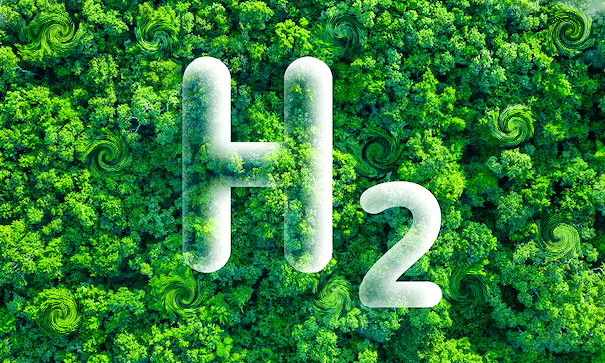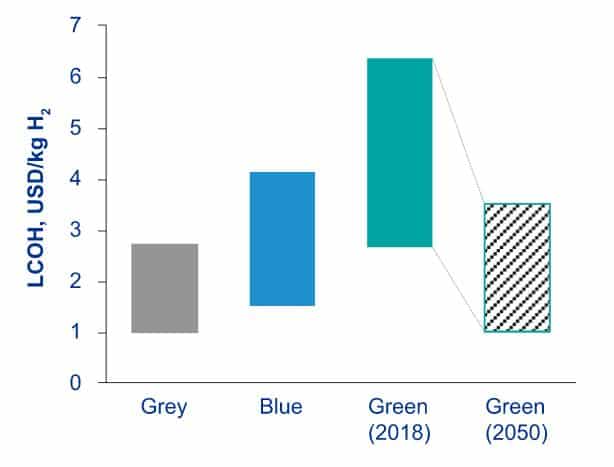Government subsidy programs in 2023 will help ensure that the global green hydrogen industry will transform from a hot table topic to a large-scale renewable power source.
Hydrogen is leading the debate on clean energy transitions, offering many uses but more so in providing renewable power. Green hydrogen, in particular, gets a lot of traction and is hailed as the energy of the future.
Meeting such a prediction needs trillions of dollars by 2050 – about $15 trillion or $800 billion of investments a year.
Major oil and power firms aim to bring huge investments to make green H2 a reality. Some of them are Shell, Adani, TotalEnergies, and ACWA Power.
While the private sector has a big role in making green H2 the future energy, the public sector also shares the same footing. A wave of government subsidies, some are already underway while others are still plans, will support the development of green hydrogen projects.
The most significant support program is most likely the U.S. hydrogen tax credits. But similar other programs are also available in the EU, UK, Germany, Canada, and India.
Several large-scale green H2 projects will reach their final investment decisions in 2023 or begin construction by the year’s end. Yet, to date, only 270 MW of green hydrogen projects are operating.
So how do all the green hydrogen subsidy programs stand this 2023?
Biggest Support for Green H2
The Inflation Reduction Act, signed into law in August 2022, offers tax credits of up to $3/kg to clean hydrogen producers for the first 10 years of a project’s lifetime. The amount of credit depends on the carbon emissions lifecycle of the project.
- The tax credit can make green H2 cheaper to produce than grey hydrogen from unabated fossil fuels.
Though the US government is still revising the final details of the subsidy scheme, they’ll be up for release in the coming months. But complaints against the Act – for alleged violations of international trade rules – from affected nations may cause a bit of delay.
For instance, the EU, Norway, and Australia objected to the Act’s preferential treatment to US-made products.
Still, the US remains to be the biggest market for green hydrogen production in 2023. The tax credits are one reason for that. Plus, the $9.5 billion federal cash subsidy provided in the Infrastructure Investment and Jobs Act for clean H2 development.
The program includes $8 billion to fund at least 4 regional clean hydrogen hubs. The law defines the hubs as:
“networks of clean hydrogen producers, potential clean hydrogen consumers, and connective infrastructure located in close proximity”.
The goal is for those hubs to form a national clean hydrogen economy. It also pushes to cut the cost of green hydrogen to less than $2/kg by 2026 (from more than $5/kg today).
Estimates show that the cost of green H2 made through water electrolysis will decrease by 2050 to even less than blue H2.
Cost of Green Hydrogen by 2050
Global Subsidies for Green Hydrogen
EU’s CCfD
The European Commission revealed its Carbon Contracts for Difference (CCfD) subsidies for green hydrogen through its Innovation Fund. The program supports a complete switch from natural gas to renewables in producing H2.
Under the CCfD scheme, the EU governments will pay end users, not the producers, a certain amount for not emitting carbon. And that includes the money saved from not paying a carbon price and a top-up subsidy to hit the strike price (cost of producing H2) as detailed in the CCfD.
The program aims to help the bloc achieve its goal of producing 10 million tonnes of green H2 by 2030 and importing another 10 MT by the same period.
The final details of this EU’s green hydrogen subsidy were due last year, but disagreement from the EP delayed it. A new draft proposal needs final agreement by all member states and the EP.
UK’s CfD
Same with the EU, the UK has also devised its own Contracts for Difference (CfD) subsidy scheme for clean hydrogen by the end of 2022. It will support up to 1 GW of green hydrogen projects with two rounds in 2023 and 2024. They have to be under construction or operational by 2025.
UK’s CfD also needs finalization, but it will help lower the price of making green H2 and scale it up. The government will shortlist green hydrogen developers showing interest in its subsidy program in early 2023.
Meanwhile, the Scottish government announced in December last year its $112 million Green Hydrogen Fund, calling for H2 project proposals early this year. The goal is to install 5GW of clean H2 by 2030 and 25GW by 2045.
Germany, Canada, and India
Germany’s H2Global green hydrogen subsidy program (for H2 imported into the EU only) is, by far, the most advanced scheme. It is a double-auction scheme: one for green ammonia and the other for green methanol and H2-based sustainable aviation fuels. It’s supported by an initial €900m ($959m) funding.
A special firm owned by the German government, the Hydrogen Intermediary Network Company (HintCo), will buy green hydrogen or its derivatives from international producers. Then HintCo can sell it to European customers.
- And any cost difference between the purchase agreements and supply contracts will be made up from the government subsidy.
Germany aims to complete the auctions by mid-2023 but won’t launch the supply auctions until 2024-25.
For Canada, the scheme works differently from European models.
The Canadian government will introduce in the Spring a new tax credit of as much as 40% for H2 production. This program mirrors the US H2 tax credit system in which the credit depends on various factors. It will run until 2030 but is up for public consultation to finalize details.
While for the Indian government, it plans to mandate the use of green H2 in industrial sectors such as steel, oil refining, fertilizer, and cement production.
Part of that goal is a $2 billion incentive program that will most likely be officially revealed in April. This will make the country another major green hydrogen player in 2023.



